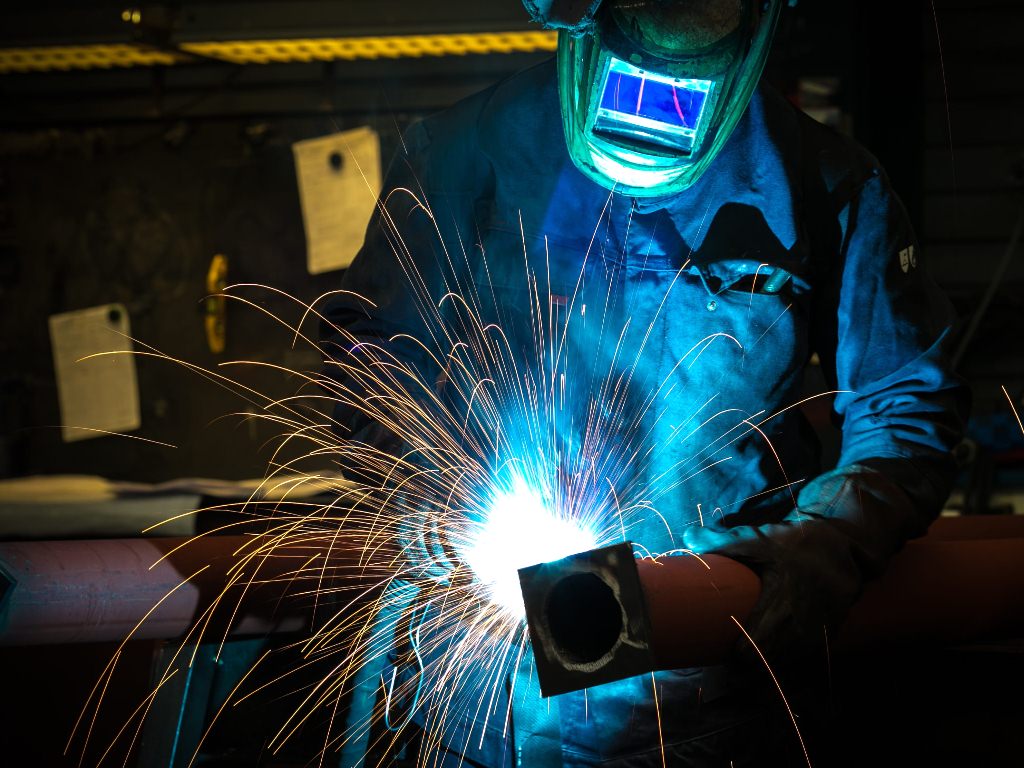Learning how to weld appropriately may seem to be very hectic without prior knowledge of the different types of welding processes available.
Some welding processes produce clean beads that are very attractive and do not require any need for cleaning while, on the other hand, some methods do the opposite.

Therefore, for one to become a professional welder in the industry of welding, it is good to be aware of how many welding processes are there and, at the same time, understand the basic concept required before any welding.
In this essay, we have gathered all the information regarding the various types of welding processes to enable you to select your best. If you want to learn more about welding please visit WeldingHubs.
Below are the different types of welding processes commonly available.
Flux-cored Arc welding is almost the same as that of MIG, although mig gas welding performs much better compared to flux-cored welding.
Like MIG welding, a wire which acts as the electrode and at the same time as the filler metal is put through the wand in flux-cored arc welding.
This wire consists of a core that creates a gas shield throughout the weld, thus doing away with the external gas supply.
Usually, flux-cored arc welding is suitable in heavier and thicker metals since it requires a very high heat-welding technique. For this fact, FCAW is generally used in repairing cumbersome equipment.
Moreover, the process is efficient since it does not produce much wastes. However, the method may leave some slags behind, which may require regular cleaning.
TIG welding is also known as Heliarc and gas tungsten arc welding (GTAW). In this welding process, the electrode consists of tungsten and is non-consumable.
The welding process is carried out without necessarily using metal fillers. However, you can add a metal filler if you wish by feeding it using your pair’s hand.
TIG welding requires the use of a gas tank to provide the constant amount of the gas flow needed for the protection of the weld. Therefore, it is suitable carried out indoors and very far away from other elements.
This is one of the most straightforward welding processes suitable for new welders. MIG is an abbreviated form for inert metal gas, sometimes known as gas metal arc welding (GMAW).
The process involves feeding the filler metal through the wand as you expel the gas around it for proper shielding.
The filler metal fed is usually a consumable wire obtained from a spool, which acts as the electrode at the same time. Once the welder creates the arc to the base metal from wire, this wire melts and becomes the metal, thus creating the weld.
Additionally, the wire continuously fed on the wand allowing the user to dial on the speed desired. If well carried, it produces a very smooth and robust weld that is visually attractive.
In this process, the stick acts the function as filler metal. An arc created joins from the end of the electrode to the base of the metal, where it melts the wire to form the filler metal hence creating the weld.
The stick has a coat in the flux, which creates a gas when heated, protecting the metal from oxidation.
SMAW does not require gas, making it suitable for use outdoor, even when the weather is adverse.
Furthermore, this process works well in painted and dirty surfaces, making it handy for the repair of equipment. Therefore, stick welding is a long learning curve with very high skills.
This process resembles that of gas tungsten arc welding; however, it uses a minimal arc. The method also uses various torches for it to achieve more and higher temperatures. More and more gas is put into the wand producing plasma.
Plasma created is then iodized to make it conduct electricity. This makes the operation of the plasma to work without filler metal. We recommend the Lotos LTP5000D plasma cutter.
Furthermore, it allows for deeper weld penetration using narrow weld, producing a pleasing weld at the same time a high level of strength.
It is the most suitable welding for thermoplastics or in metals. It makes use of a laser as its primary source of heat to create the weld—laser beam welding used on stainless steel, aluminum, titanium, and in the automotive industry.
This is the process with a very high form of heat that was known as atom welding. It uses hydrogen gas for shielding two electrodes made of tungsten wire. However, atomic hydrogen welding was replaced with mig inert gas.
In this type of welding process, a high-velocity beam of the electrons produces heat through kinetic energy; hence in the process, it welds two materials joined together.
Generally, proper welding requires mastery of different types of welding processes. Hopefully, from this article, you have gotten a better understanding of various types of welding.
Therefore, if you want to purchase a better welder, then do not hesitate to visit our website at weldingHub.com for more welding services. Just get yours today and enjoy forever.